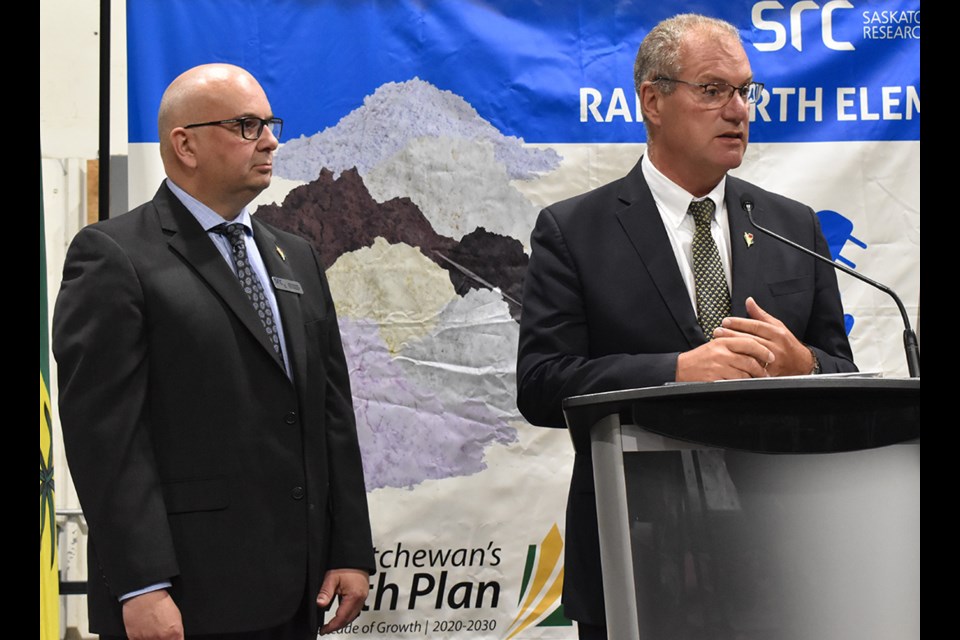SASKATOON — Saskatoon Research Council President Mike Crabtree expressed optimism regarding stabilizing the rare earth market. After five years of volatility, he believes the supply chain will normalize with the commencement of operations at the Saskatoon processing plant.
During the unveiling of SRC's proprietary commercial-scale solvent extraction cells facility on Thursday, May 25, Crabtree highlighted Canada's position as one of the few countries equipped with this advanced technology.
Crabtree stated, "I think that we will see, going forward in the next five years, that the market will remain volatile because production, supply chain, and demand will be out of sync. Beyond those five years, the market will start to settle down," ensuring stability in the industry.
He further emphasized the significance of the government's involvement in rare earth mining and production, asserting, "It is one of the reasons why the government is taking the lead."
Crabtree, accompanied by Rare Earth Elements Division Associate Vice President Erin Herman, said that the provincial government oversees the processing plant's commercial operations. SRC, an agency of the Saskatchewan Government, has been working on rare earth elements for over 15 years, establishing them as pioneers in the field.
Crabtree praised SRC's efficiency in developing and commissioning solvent extraction cells within five years. This accomplishment, made possible by the dedicated efforts of their staff, positions SRC as one of the leading authorities in Canada and North America.
With the fifth-largest reserves in the world, Canada is poised to play a vital role in the global rare earth elements industry, making it a significant player in the 21st-century global economy, according to Crabtree. He compared the importance of rare earth elements to that of oil and gas in previous years, highlighting the opportunity for Canada to supply value-added products.
The midstream facility at the processing plant will produce high-value minerals, projected to be worth approximately $10,000 per tonne over the next decade or two. Once processed, the value will increase to $20,000 per tonne, prompting Crabtree to ponder the country's role in supplying refined products at significantly higher prices.
Canada, mainly Saskatchewan, stands alongside only a handful of nations possessing proprietary commercial-scale solvent extraction cells. SRC leads the charge in constructing the rare earth minerals processing facility in Saskatoon, which is still under development.
Crabtree explained, "As SRC continues to develop its commercial demonstration rare earth processing facility, it is developing additional expertise and new processes and technologies." The automation algorithms integrated into the solvent extraction cells enhance productivity, efficiency, and cost-effectiveness, making them a valuable asset to SRC's facility and the growing rare earth industry.
By fall 2023, SRC plans to manufacture 140 of these cells at their fabrication facility. These cells will serve as the primary component in the separation unit of the processing facility, enabling the extraction of individual or grouped rare earth oxides from mixed rare earth chloride, a liquid mixture comprising all 17 rare earth elements.
Rare earth elements hold immense value, with applications in various modern technologies, including cell phones, electric vehicles, wind turbines, and the defense industry.
Currently, under construction SRC's fully integrated, commercial demonstration Rare Earth Processing Facility in North America is expected to be fully operational by late 2024. The facility will incorporate hydrometallurgy, separation, and metal smelting stages, solidifying Saskatchewan's status as a cutting-edge rare earth element hub.





